[ Page 5 ]
1/72 scale kits of the Mikoyan Gurevich MiG-21
... continued from MiG-21 page 4....
Many air forces use the MiG-21 over the World. So still some models were made as also penty of after market decals were available in the "collection".
I bought another few kits of the fine Revell MiG-21 F13 kit #04346 as described on page 2.
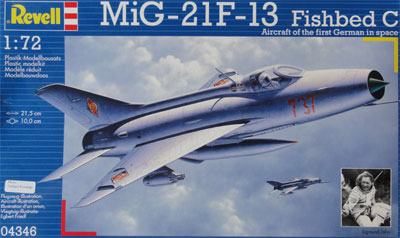
The first kit as to be made as a MiG-21 F13 operated by the Syria Air Force. Earlier in 1967 no. 10 squadron based at Dmeyr was involved in the Six Day War with Israel flying MiG-17 and MiG-21 F13's still painted in a metal scheme. A desert scheme was probably applied from 1969 and also the aircraft type flown by no. 67 fighter squadron. (it may be that this particular aircraft is an Aero S-106 as several were delivered in the early 1970s from Czechoslovakia).
The MiG-21 F13 model was made as per Revell instructions. One canon fairing is fitted standard and these early MiGs had light grey cockpit interiors and inside gear bays of medium grey. The cockpit as per kit is fine. Minor issues during assembly are getting a flush air brakes installment when set closed
The camouflage colours are difficult to determine, I settled for these acrylics:
- lower surfaces light blue airbrushing AKAN 73008;
- sand a mix of Revell aqua 17 brown + 30% white;
- green approx. FS34079 using Gunze Sangyo 309;
Between colour airbrushing masking was done by helding a piece of torn carton. This gives a soft demarcation edge.
The antenna areas were painted green including the inside radome cone. Some drawings found suggested that the rear canopy portion was over painted but I did not see this on most photos.
The markings came from a variety of sources. The "United Arab Air Force" markings with "3 stars" such as the roundels of approx. 8 mm diameter were found in an Aztec "Sky guardian" 72-052 set and the UAR flags in a Berna MiG-17 decal set.
(the old decals seen in the photo were thus not used).
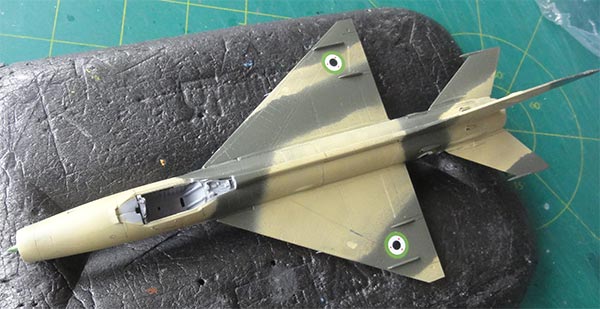
There are also a few different antennas, made from scrap. Armament was fitted with the rocket pods as per kit and the central fuel tanks was also fitted.
A bit weathering was done with thinned dark brown paint applied in the recesses of flaps, brakes with a fine brush. With a pencil some panellines were suggested. Finally the model got a matt varnish coat airbrushing Johnson Future / Pledge with ("floor care") some 10% mixed in Tamiya X-21 Flat Base. This gives an even matt "desert" sheen and protects the decals.
The canopy was set open and the cockpit interior got some bits and pieces to look "busy".
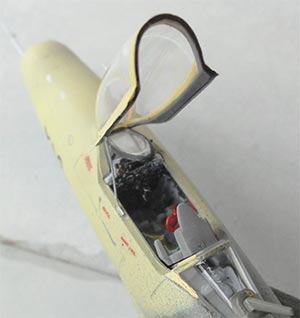
SYRIA



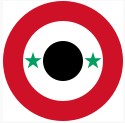
[ 185.680 sq.km | capital: Damascus | <17 million inhabitants with many refugees abroad | GDP USD 2,800 per capita nominal ]
Syria as republic was established in 1930 and was also referred to as "Levant".
The air force "القوات الجوية العربية السورية, Al Quwwat al-Jawwiyah al Arabiya as-Suriya" was established in 1948 in the period that France and Great Britain withdraw from the region (and the state of Israel established). North American T-6 were used and soon various armed conflicts in the region involved Syria, including the war in 1948. Some Spitfires and Chipmunks were acquired from Britain followed much later due to an arms embargo in 1956 by ex-RAF Meteors. Meanwhile from 1955 Czechoslovakia supplied for training in Egypt some 20 MiG-15bis "Aero S-103" jet fighters and some 4 MiG-15UTI "Aero CS-102" trainers. The Suez crisis of 1956 led to the destruction of many of these aircraft based in Egypt. Poland supplied some 5 CS-102 as replacements. Beginning 1957 saw the delivery of some 60 MiG-17F including some 20 PF with radar (also from DDR and Poland) and also a dozen IL-28 bombers were delivered.
February 1958 it was decided to create a joined "United Arab Republic" with Egypt with a single joint UAR air force. Many Syrian aircraft were based in Egypt at the time and it appears also small numbers of supersonic MiG-19 were obtained and flown in Egypt. Some 36 MiG-21 F13 and 4 MiG-21U trainers were acquired with deliveries starting in 1963. They were based at Dmeyr north east of Damascus with the MiG-17's mostly based at Almezzeh. A coup d'etat in 1961 saw the UAR disbanded with years of unrest and in 1963 the Ba'ath Party with the al-Assad family taking over power in the country.
In June 1967 during the Six Day war with Israel air strikes were flown and heavy losses incurred. The following years additional MiGs were acquired from Poland with from 1969 the MiG-15 "Lim-1" and CS-102 as well as some 60 Sukhoi SU-7 Fitters. From Czechoslovakia some 12 Aero S-106 (license MiG-21 F13) in the 1970s as well as 10 from Hungary and 4 from Iraq were acquired. From 1970 the first MiG-21M / MF were delivered by the USSR flying also in the Yom Kippur war with great losses and in the following years probably more than 75 were added including a few MiG-21R. Still, some 30 MiG-17 were used in 1971. From 1973 about 40 SU-20 Fitter-C were acquired and also the first MiG-23 aircraft arrived and later also MiG-25 interceptors and probably some 40 SU-22 Fitter-K strike aircraft with more than 150 aircraft in total. Also some 50 Gazelle helicopters were delivered from France. Transport aircraft are the usual Antonovs and smaller Ilyushins but also the larger IL-76 Candid transport.
In the 1980s also nearly an additional 200 MiG-21bis were also delivered by the USSR including MiG-21U trainers. From 1987 considerable numbers of MiG-29 (about 80) and SU-24 Fencers (some 20) from the Soviet Union arrived as well but not the full order as the USSR stopped cooperation in 1988. All those years the Syrian Air Force had hundreds of combat aircraft.
It seems that not earlier than 2008 more aircraft were acquired, with Belarus delivering (second hand) 28 MiG-23MLD and 5 MiG-23UB. Over 60 Aero L-39 trainer/attack aircraft were also acquired and it is probable that MiG deliveries continued with eventually over 40 MiG-29, some 40 MiG-25 being delivered.
A small naval division at Latakia operates Kamov and Mi-14 helicopters and the army flies large amounts of Mil Mi-8 and Mi-24 Hind attack helicopters.
The internal Syrian civil war starting around 2011 with geo-political interventions have almost devastated the country and population. The regime flies its aircraft in considerable numbers with also border incidents. In this crisis Russia in support of Assad flew its own Sukhoi SU-24 Fencer and probably Sukhoi SU-30 Flanker aircraft in the region from Syrian bases.
December 2024 local groups chased away Assad and regime. A Syrian Salvation Goverment was established. Still there is unrest with Turkish backed groups in North Syria and Druze groups in the South with Israeli invention in 2025.

It is probable that this particular aircraft is an "Aero S-106" as several were delivered in the early 1970s from Czechoslovakia and flown by no. 67 squadron.
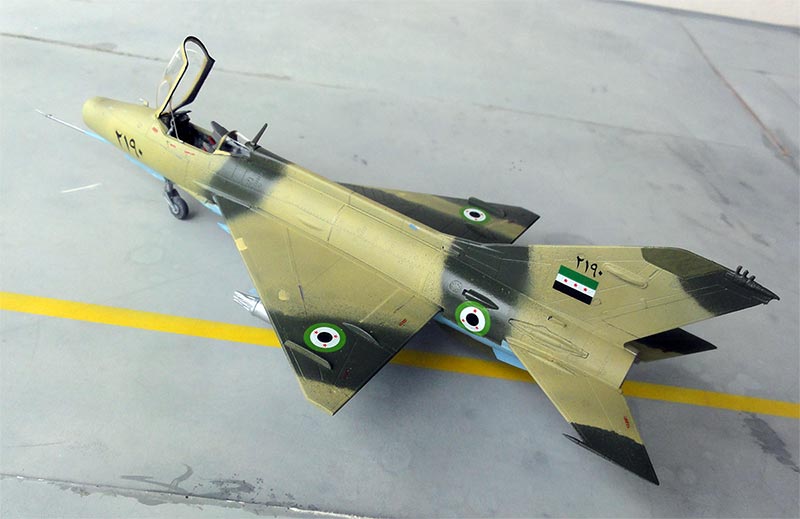
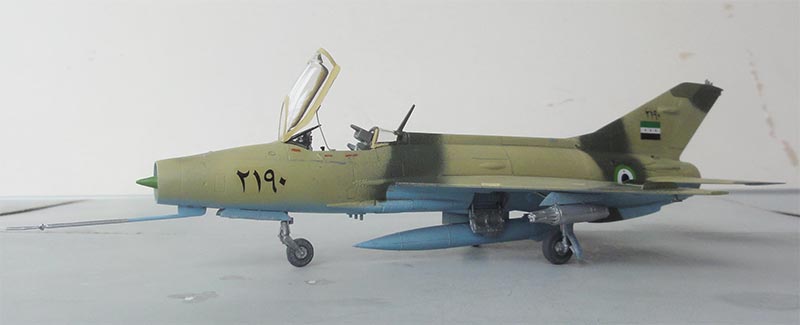
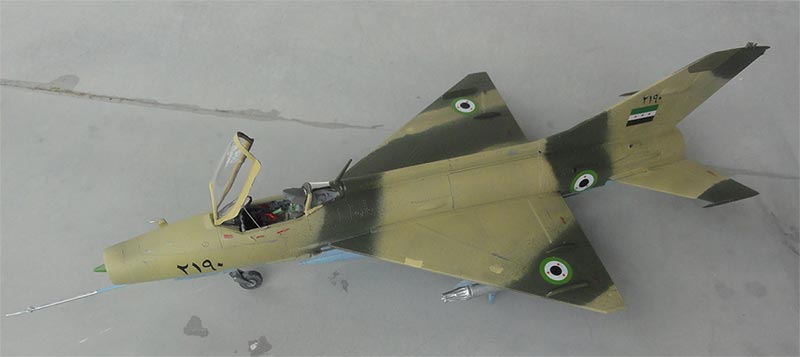
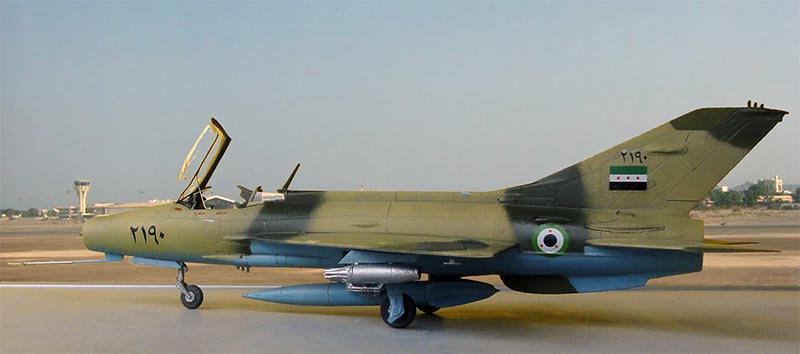
MiG-21 F13 / Aero S-103 Syria in a desert scheme of the 1970s
...
Another Revell F13 kit was made as a Communist North Korea aircraft is a dull metal scheme. North Korea received from the Soviet Union several MiG-21 F13 from 1967. They could be armed with FFAR UB-16-57 rocket pods as well and in the beginning these aircraft were probably flown by Chinese pilots.
The model colour is an overall metal for which Revell aqua 99 aluminium acrylic was airbrushed. It looks a bit dull as on the actual aircraft. The nose cone tip was painted green and the other antenna panels medium grey.

The North Korean roundel is "without the white background". These roundels were retrieved from an Eduard MiG-15 kit and have a diameter of 9 - 10 mm. The RED 417 aircraft nose code was found in the spare decal box.
A few "ATOLL" air-to-air missiles were installed as well found in the spares box. The canopy was set open, tilted up forward, a very special characteristic of this early MiG-21 F13.
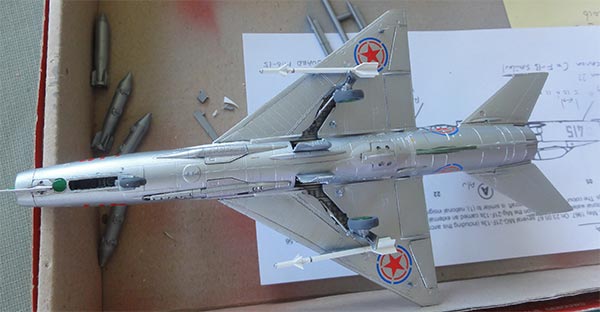
A gloss protecting varnish coat was airbrushed using Johnson Future / Pledge
NORTH KOREA
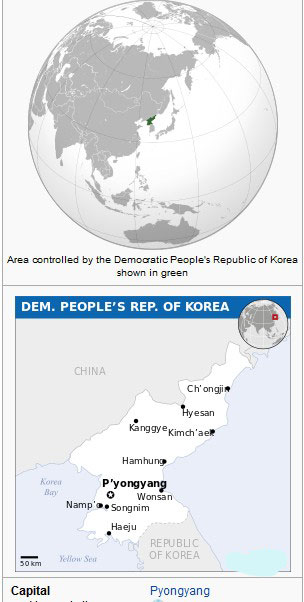

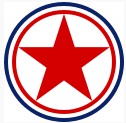
More info about North Korea Air Force can be seen at the MiG-15 page here....
Delivery of the MiG-21 fighter started with probably from 1966 some 80 MiG-21 F13 though some reported the first arrived in 1963. It is probable also about 100 MiG-21PFM followed from 1969. In the 1970s and 1980s this fleet was kept operational with much difficulties.
Probably still some 2 dozen MiG-21 aircraft are used. On Google Earth 2017 some MiG-21 aircraft were seen at the North Korean base near Hwangju:
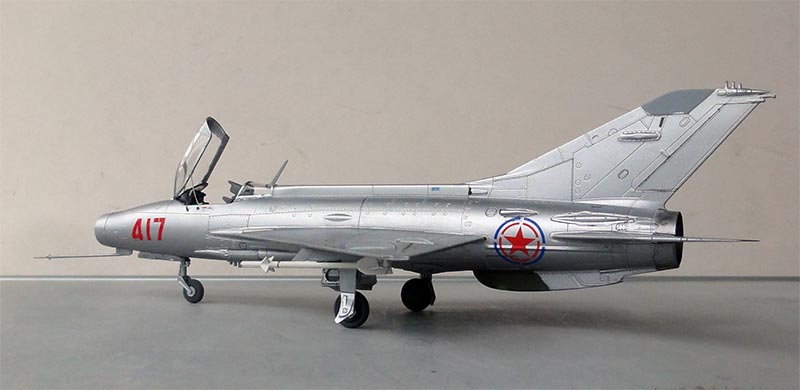
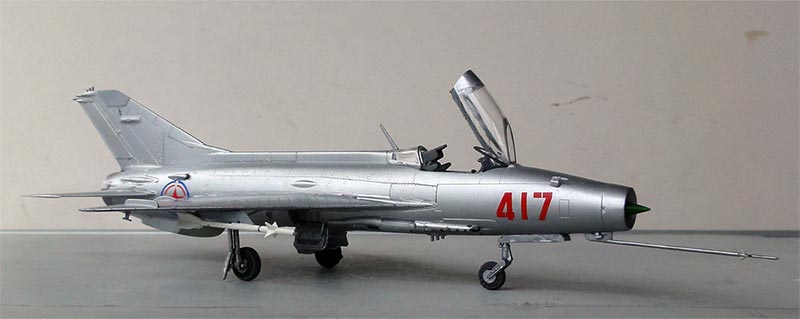
MiG-21 F13 North Korea
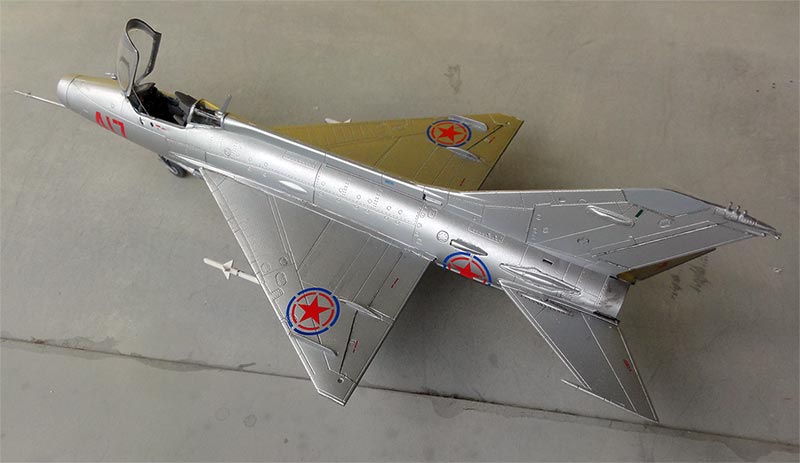
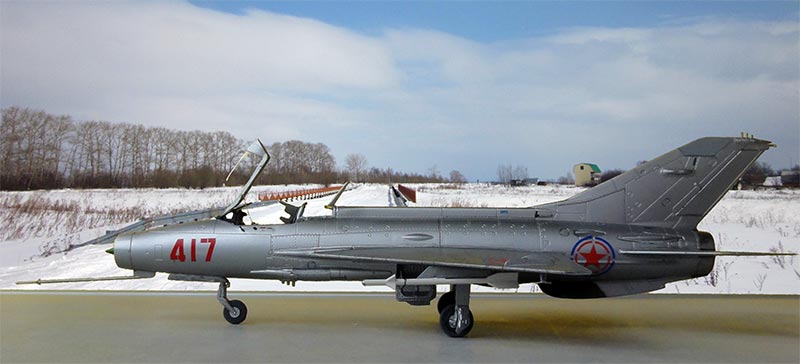

Soviet jets were considered a majopr treat during the Cold War. During the Korean War it became clear that the MiG-15 was a serious opponent to the U.S fighters like the F-86 Sabe. Several MiG-15 had been tested after they have been obtained, see my MiG-15 intelligence page here.
"Have Doughnut" was the name of the U.S. Defense Intelligence Agency project to evaluate the Soviet MiG-21 fighter. Again, the MiG-21 was considered a real air treat at the time. The MiG-21 "Fishbed E" was obtained through Israel. The subtype "E" was a MiG-21 F13 "Fishbed C" that could be fitted with RATO bottles for take-off. Israel got the aircraft as the result of its Operation Diamond in a defection pre-arranged by the Israeli Mossad intelligence agency. On August 16, 1966 the Iraqi Air Force pilot Capt. Munir Redfa defected to Israel during "a training flight".
From January 23, 1968 to April 8, 1968 the plane was loaned to the U.S. Air Force for evaluation. The MiG, in the Air Force's temporarily possession, received a new designation — the YF-110 . The tests were done in secret at the later known "Area 51" Groom Lake facility in the desert north of Indian Springs, Nevada:
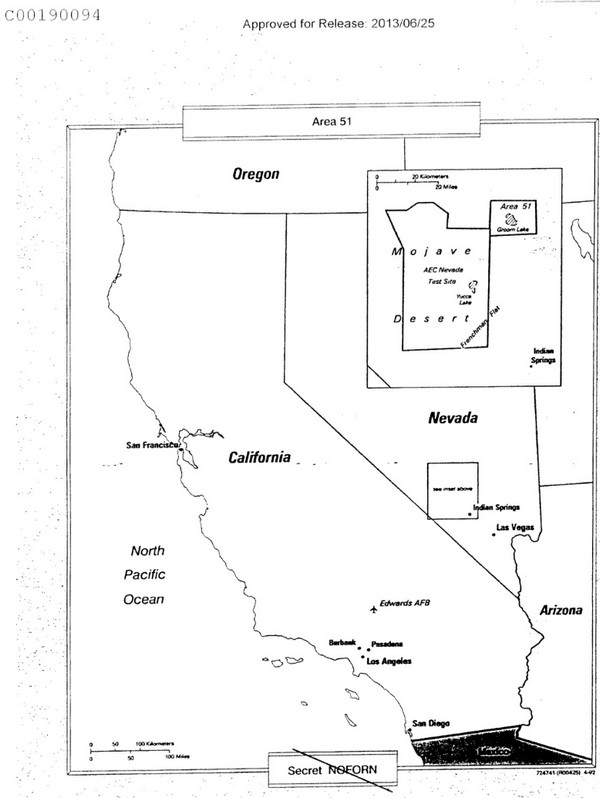
Focus was on technical characteristics of the jet, while another was a tactical evaluation. Some of the results of this highly classified project was to establish specific US training squadron that used similar flying tactics as the MiGs.
Two other late 1960s evaluation tests of Soviet jets were done in secret. Project HAVE DRILL MiG-17 began flying at Groom Lake on February 17, 1969 and flew some 172 sorties over 55 days. The HAVE FERRY MiG-17 as backup to the HAVE DRILL aircraft, began flying on April 9, 1969 and flew 52 sorties over 20 days. While the HAVE DOUGHNUT and HAVE DRILL/HAVE FERRY efforts are the ones whose details have been declassified, they were not the last of efforts. Under a program designated CONSTANT PEG, the Air Force tested other MiGs like the MiG-23 that were acquired by a variety of means. In the 1970s the tests were done at the Tonopah Test Range, about 70 miles northwest of Area 51. In February 1976, the Soviet pilot Victor Belenko defected with his MiG-25 "Foxbat" to Japan. He landed at the Hakodate air base and U.S. and Japanese experts examined the top secret jet in great detail. It was returned to the Soviet-Union some 9 months later.
Credit: from reference NS Archive
The kit was made as decribed above for the North Korean MiG-21 F13 model.
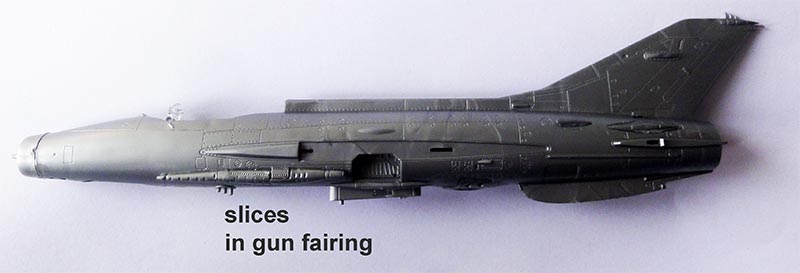
The gun vents were made a bit deeper.

Some putty was needed in small gaps, Vallejo plastic putty will do here and wipe off after it has been applied in the gaps.
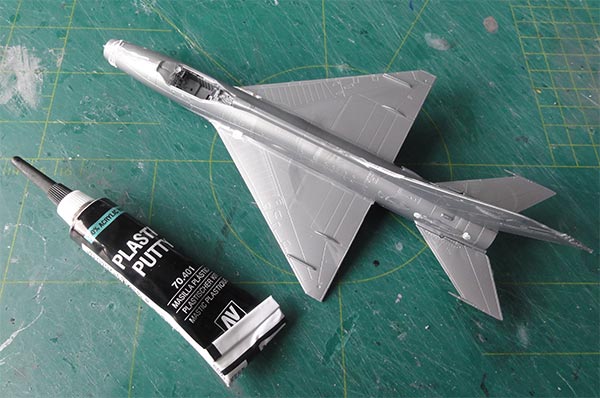
The HAVE DOUGHNUT MiG had a bare metal colour. For the aluminium, it was decided to airbrush an ALCLAD ALC-115 polished aluminium metalizer coat.
Prior to that, a base gloss black paint was airbrushed, polish after that has been applied.
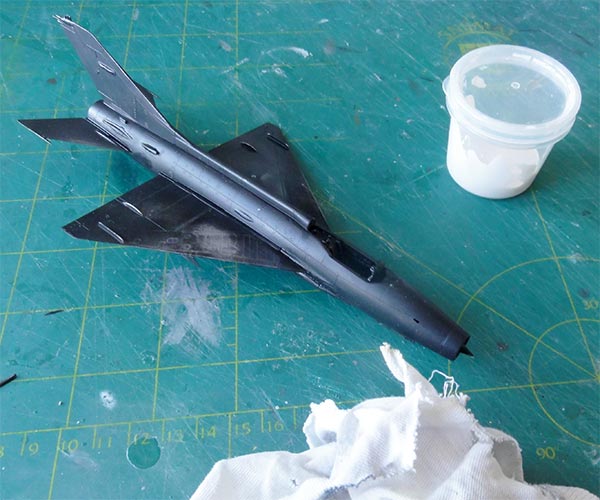
I used a simple technique to get different sheens through masking. While airbrushing, tear of a mask and over airbrush, it will show slightly different. Ventilate the airbrushing area and wear a face mask!


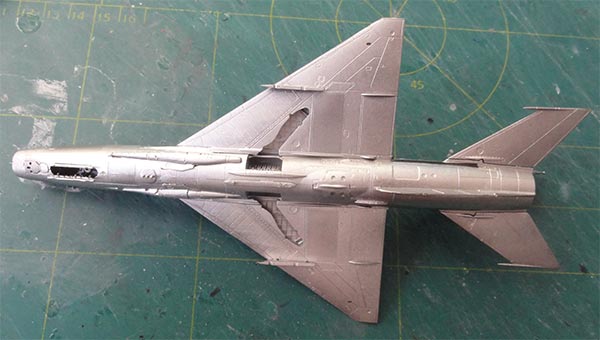
The simple USAF markings were easily found in the decal spares box and some stencils from the kit were used. The simple code 80965 was made from number decal bits.
The landing gears were installed.
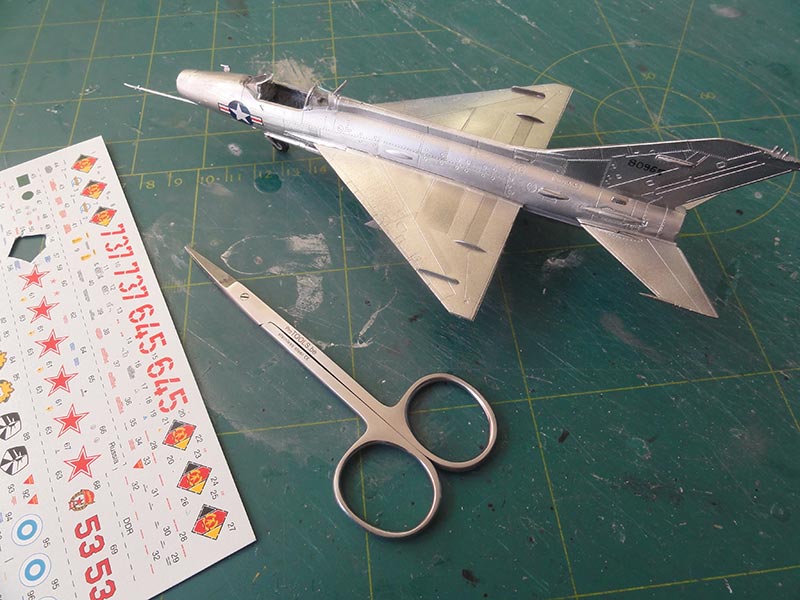
The canopy was set open and pitots and smaller probes installed.

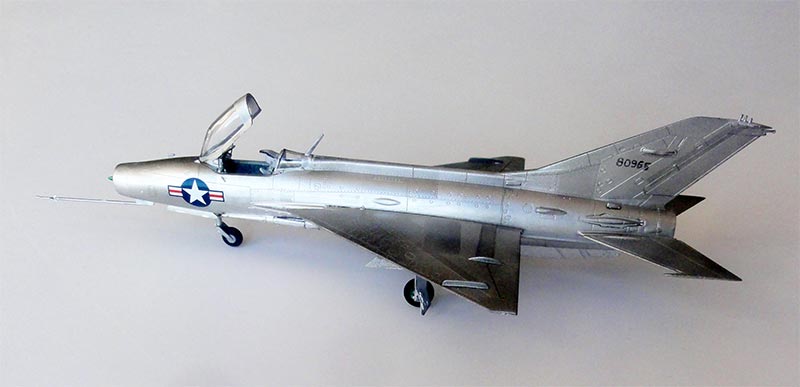
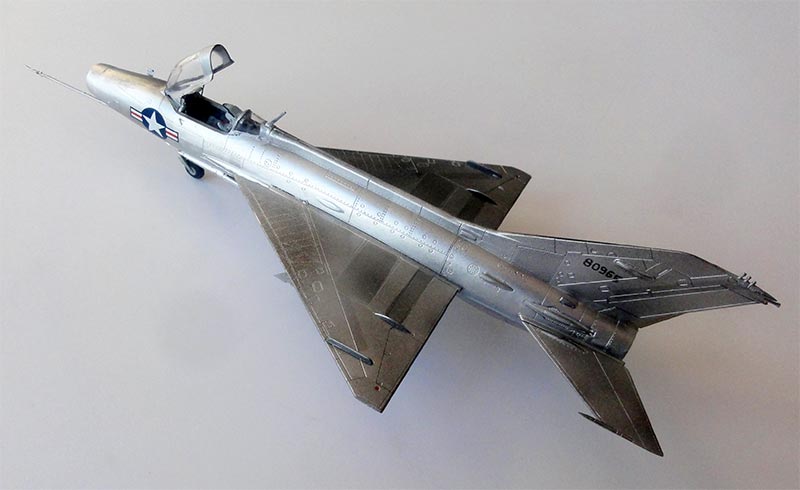
It now sits nicely in the USA "Test Aircraft" collection.
Back to 1/72 Models.....
(c) Copyright Meindert "designer"/ All rights reserved. Your comments are welcomed by webmaster
Created this page
June 15, 2018